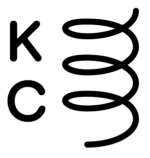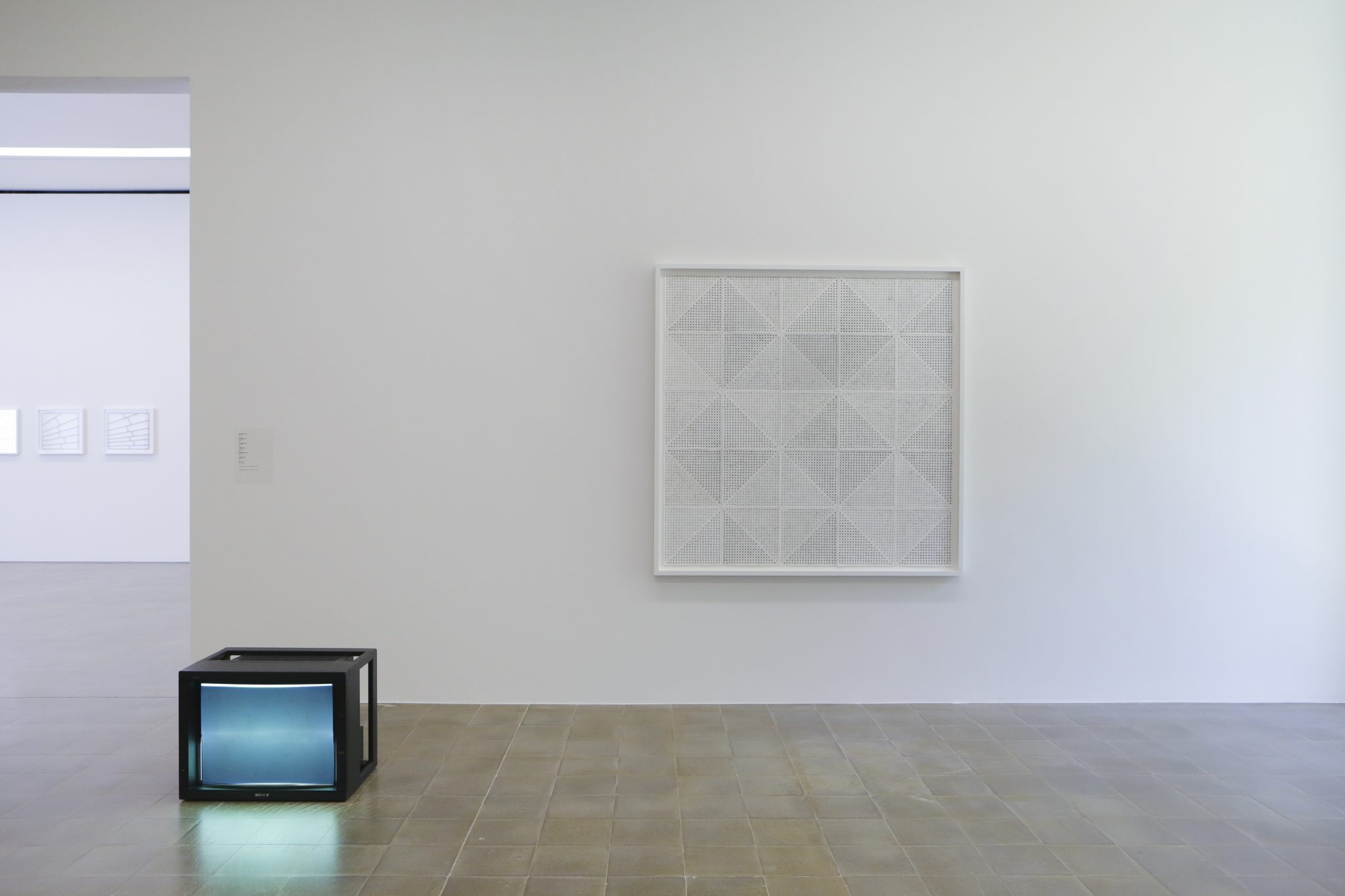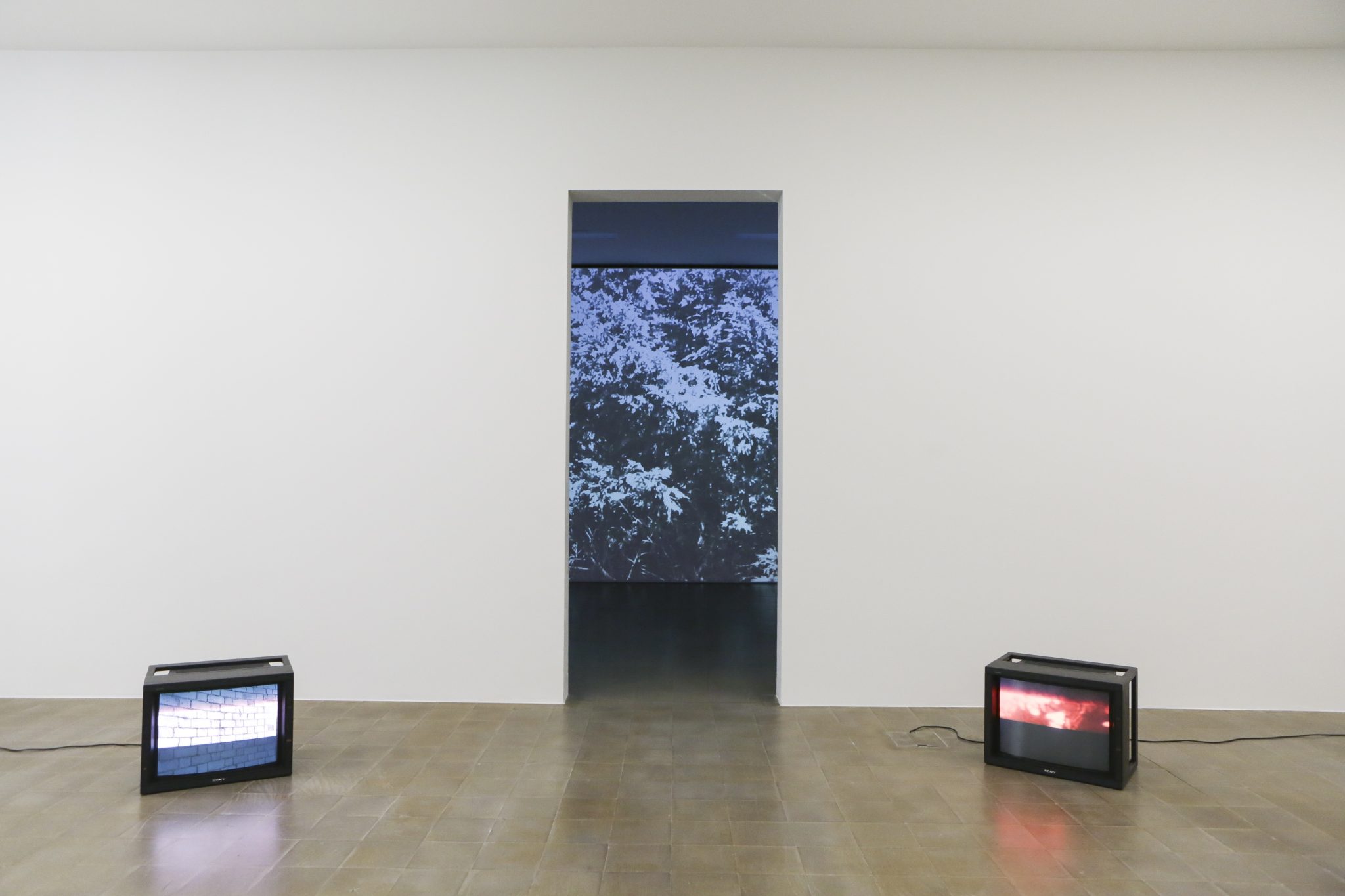

ANNA BARRIBALL
15 April 2018 – 10 June 2018
ANNA BARRIBALL
15.4.-10.6.2018
Anna Barriball (*1972, GB) makes drawings, sculptures and videos that reveal hidden meanings in the everyday and overlooked. For her drawings of architectural elements, such as doors, windows and walls, she transfers the textured surface into an impression of the object on paper. This time-consuming process results in relief-like images that retain the three-dimensionality of the original material. This relationship between the object and the flat surface also characterises the sculptures she formed by wrapping ink drawings around her own body, as well as the videos she presents in the spatial forms of box monitors. A recent development is Barriball’s introduction of luminous colour, developing from the fluorescent glows added to the edges of drawings to the flooding of videos with coloured tints. This indication of atmosphere or mood continues her subtle transformation of the textures of the domestic environment into a dense language of their inner life.
Anna Barriball’s working method is unusually physical and her experience of time and endurance integral to her drawings and sculptures. The passage of time is perceptible in the lustrous surfaces of her drawings, for which she uses a pencil, paint brush or her fingers to press the paper into the entire surface of the textured object. As a result, her works on paper resemble monochrome shallow relief sculptures and have the effect of autonomous objects rather than depictions of things.
The architectural features that are the subject of many of Barriball’s drawings and videos are familiar to the artist from her home or studio, her translation into three-dimensionality rooted in her experience of it. The effect is sometimes uncanny, for example in the case of the video Draw (fireplace), 2005, where the draft of air in the chimney is made visible by its movement of the tracing paper: it is as though a building is breathing. In contrast to the dense pencil imprints of doors, windows or walls, the works in the series Blinds, 2015-16 are constructed from strips of paper that she has coated in white ink on the front and coloured fluorescent orange or pink on the back. Relating to the artist’s interest in minimalism, they also indicate the presence of light behind the space of the work.
Barriball regards the domestic environment as an extension of ourselves, including what is unseen, felt or perceived. It is also inextricably connected to memory in her work, particularly the feelings and fantasies of childhood, while half-remembered objects and situations are frequently evoked by chance encounters. Yellow Leaves, 2011 was, for example, inspired by curtains she discovered in a market, identical to those that hung in her 1970s childhood home.
An important element of Barriball’s practice is the relationship between drawing and photography. Like photographs, the drawings are minutely detailed documents, recorded over the entire surface of the paper and without hierarchy of information. For Night Window with Leaves, 2015 Barriball applied many layers of pigment and beeswax picture varnish to achieve an impression of darkness as intense as looking through a window at night. The difficulty of pinning down the many layers of dry pigment mirrors the fugitive subject.
The presence of colour in the work has increased in recent years, from the subtle orange glow around the Sunrise/Sunset drawings, 2014 to the video loops tinted with intense colour. The artist is interested in how this process, originally used in silent cinema, can be employed to charge or heighten the atmosphere of the entire image, for example with temperature, the time of day or a sense of foreboding. Seven different video loops flicker within the space of the monitors. Rhythms in the editing echo the rhythms of the body, breathing, pulsing and blinking. The loops become like a search for something, a spectral play of shadow and reflection.
In Daylight leaf shadows quiver and sway in real time, coming in and out of focus as the sun moves through clouds. The moving image is interrupted with blank frames and tinted the yellow of intensified sunlight. The still photographs in the video loop Moonlight were made at night through the windows of unlit buildings with a digital camera, autofocus and flash. Each time the camera struggled to find something it could focus on. The resulting images were always a surprise: the dust on the surface of the glass, the artist’s reflection or the mirrored flash of the camera’s own light combined with glimpses of the world beyond the window.
The light and strong colour of these recent videos has transferred to the new series, Screen, 2018. Each work is the size of a doorway and each black ink dark leaf space is ‘lit’ by a different colour, with an associated mood. In Fade, 2017 the three-part video installation, colours continually rise over the image, playing with our sense of reality. The atmosphere shifts as does the temperature of the image, but no narrative is offered. The shadow that sweeps anti-clockwise across each projection is reminiscent of the second hand of a clock. This intermittent darkness also evokes the digital scanning, the blinking of the eye or the shutter of a camera: moments in which an image is on the threshold of both visibility and obscuration.
The exhibition at Kunsthaus Pasquart is Anna Barriball’s first solo exhibition in Switzerland.
Curator of the exhibition
Felicity Lunn, Director Kunsthaus Pasquart
Publication accompanying the exhibition
The exhibition is accompanied by an illustrated publication with exhibition shots and texts written by Anna Barriball, Margaret Iversen and Felicity Lunn, published by the Verlag für moderne Kunst (DT / FR / ENG). → Publication Anna Barriball
Guided tours
Thurs 3.5.2018, 6pm (dt) Felicity Lunn, Direktorin Kunsthaus Pasquart
Thurs 17.5.2018, 6pm (fr) Kathleen Vitor, historienne de l’art
Artist’s talk
Thurs 7.6.2018, 6pm (eng) Anna Barriball in conversation with Felicity Lunn



















